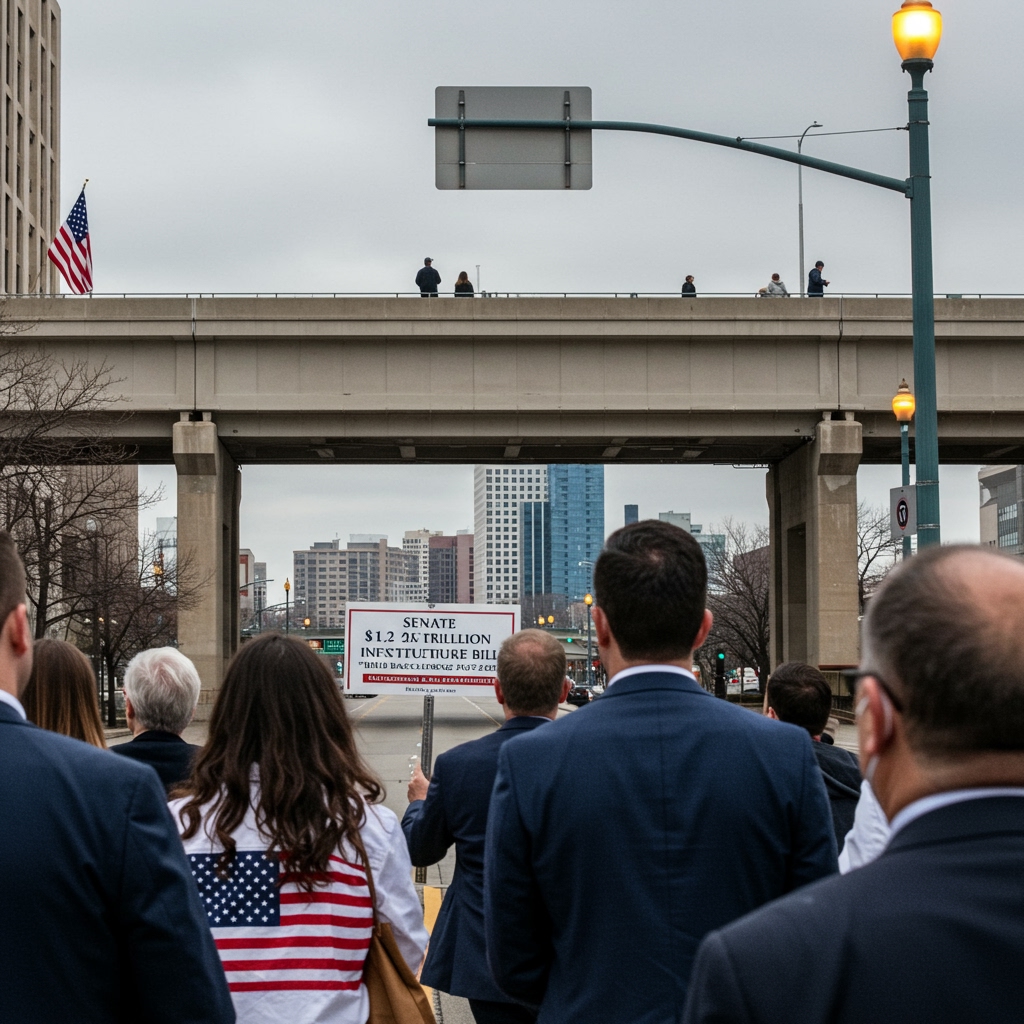U.S. Senate Passes Sweeping $1.2 Trillion Infrastructure Investment
Washington D.C. – The United States Senate today delivered a significant legislative victory for the administration, passing a comprehensive $1.2 trillion infrastructure package. Officially titled the “Build Back Stronger Act of 2025,” the landmark legislation received substantial bipartisan support, evidenced by a decisive 68-32 vote. This crucial vote, taking place in the nation’s capital, culminates months of intricate and often contentious negotiations, paving the way for potentially transformative investments across the country’s foundational systems.
A Bipartisan Effort Decades in the Making
The passage of the “Build Back Stronger Act of 2025” marks a rare moment of bipartisan consensus on a major domestic policy initiative. The 68-32 vote total reflects support from members of both major parties, underscoring a shared recognition of the urgent need to modernize America’s aging infrastructure. For years, policymakers have debated the necessity and scope of federal investment in roads, bridges, transit, and digital networks. This bill represents the most substantial federal commitment to these areas in decades, a testament to the persistence of advocates and the willingness of legislators to find common ground despite deep political divisions.
Key Pillars of the Infrastructure Package
The $1.2 trillion price tag of the “Build Back Stronger Act of 2025” is allocated across a wide range of critical infrastructure sectors. The bill is designed not only to repair and upgrade existing infrastructure but also to build new systems capable of supporting a 21st-century economy and improving the quality of life for American citizens. The funding is structured with specific targets:
Investing in Surface Transportation: Roads and Bridges
A cornerstone of the package is the allocation of $110 billion specifically for the repair and reconstruction of roads and bridges. The American Society of Civil Engineers has consistently graded U.S. infrastructure poorly, particularly its roads and bridges, citing crumbling pavement and structurally deficient bridges that pose safety risks and economic inefficiencies. This $110 billion investment is aimed at addressing the extensive backlog of necessary repairs, improving traffic flow, reducing vehicle maintenance costs for drivers, and creating jobs in construction and related industries. States and municipalities will receive significant portions of this funding to undertake long-delayed projects.
Expanding Broadband Internet Access
Recognizing that high-speed internet is no longer a luxury but a necessity, especially after the shifts brought about by remote work and online education, the bill includes a substantial $65 billion investment to expand broadband internet access. This funding is critically important for bridging the digital divide that persists in rural, tribal, and low-income urban areas. The goal is to ensure that every American household has access to reliable, affordable high-speed internet, enabling participation in the digital economy, remote healthcare, and online learning opportunities. The investment aims to lower costs and increase competition among internet service providers.
Modernizing the Electric Grid
To enhance resilience against extreme weather events, improve energy reliability, and facilitate the transition to cleaner energy sources, the “Build Back Stronger Act of 2025” dedicates $73 billion to upgrading the national electric grid. Much of the U.S. power grid infrastructure is decades old and vulnerable to outages caused by storms, cyberattacks, or equipment failure. This funding will support investments in transmission lines, smart grid technology, cybersecurity measures, and infrastructure necessary to integrate renewable energy sources like solar and wind power effectively. A more robust and modern grid is essential for economic stability and national security.
Boosting Public Transit and Passenger Rail
The legislation also directs heavy investment towards improving public transit and passenger rail systems. While a specific dollar figure was not detailed in the summary, the emphasis indicates a significant commitment. This funding is intended to modernize aging transit fleets, expand routes, improve station accessibility, and invest in high-speed rail projects. Enhanced public transportation options are vital for reducing traffic congestion, cutting carbon emissions, and providing accessible and affordable mobility for commuters and travelers across the country. Investment in passenger rail, particularly, could offer a viable alternative for intercity travel.
Months of Complex Negotiations
The journey of the “Build Back Stronger Act of 2025” through Congress was characterized by months of complex negotiations. Lawmakers grappled with questions of the bill’s total cost, the balance between traditional infrastructure projects and new areas like broadband and the grid, funding mechanisms, and oversight. Differences between moderate and progressive factions within the Democratic party, as well as securing sufficient Republican support, required numerous concessions and compromises. The successful 68-32 Senate vote reflects the legislative leaders’ ability to navigate these challenges and build a broad coalition.
Path to the President’s Desk
Having passed the Senate, the “Build Back Stronger Act of 2025” now advances to the President’s desk. The administration has championed this infrastructure package as a top priority, viewing it as essential for stimulating economic growth, creating millions of jobs, and enhancing America’s global competitiveness. With the President expected to sign the bill into law swiftly, its passage marks a major legislative achievement for the administration, delivering on a key campaign promise and setting the stage for the rollout of these massive infrastructure investments across the nation. The focus will now shift to the effective and timely implementation of the projects funded by this historic legislation.





